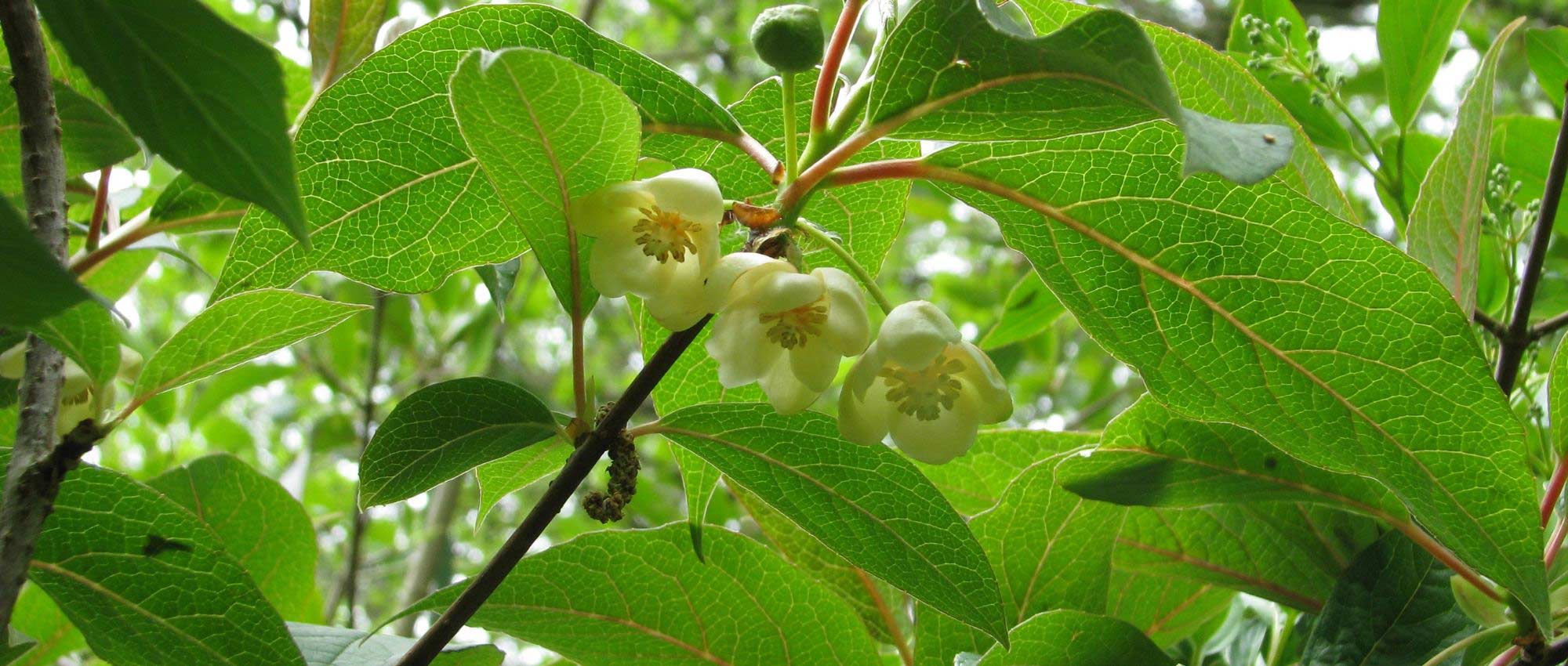
Schisandra: planting, berry harvest, maintenance
Contents
Schisandra in a nutshell
- Schisandra is a deciduous Asian liana, very hardy
- It offers a beautiful flowering, white or red, in late spring to early summer, and then, in autumn, edible berries, “of the five flavours,” with medicinal properties
- It thrives in partial shade, protected from the scorching sun, for example at the edge of woodlands.
- It requires soil that remains cool, as it is sensitive to drought
- You can make it climb trees! But also direct it onto a pergola, trellis…
A word from our Expert
Schisandra is a climbing plant of Asian origin, producing beautiful red or white flowers in late spring. These are followed by edible berries, sometimes referred to as “five-flavour berries,” which have numerous medicinal properties and are used in traditional Chinese medicine. They are also very decorative, forming clusters of round fruits in a beautiful bright red! Several species are cultivated, notably Schisandra chinensis, the most commonly used for its berries, Schisandra grandiflora, which offers elegant white flowers, and Schisandra rubriflora, with red flowers. These are vigorous lianas that you can train to climb trees or direct over a pergola or trellis… Schisandra is still a plant that is not widely cultivated in gardens. It is not very well known.
Schisandra thrives in partial shade and should be sheltered from the sun during the hottest hours. Although it enjoys good light and can tolerate dappled sunlight, it needs to have its base in the shade. It prefers soils that remain cool and do not dry out. It is quite hardy, tolerating temperatures between -15 and -25 °C, depending on the varieties, which allows for its cultivation even in fairly cold regions. It requires very little maintenance. It is robust and vigorous, and can reach heights of up to 10 metres.
Botany
“`html
Botanical data
- Latin name Schisandra sp.
- Family Schisandraceae
- Common name Schisandra, Schizandra, five-flavour berry
- Flowering depending on varieties, between May and July
- Height up to 10 metres
- Exposure partial shade
- Soil type fertile, rich in humus, cool
- Hardiness between -15 and -20 °C
Schisandra are deciduous or evergreen climbing plants, native to East Asia. There are 25 species found in China, Myanmar, India, and Mongolia. They sometimes grow in mountainous areas, up to over 2,000 metres in altitude, which likely explains their excellent hardiness. The centre of diversity is in China, where the berries of this liana have been used for their medicinal properties for a long time. There is also a species from the United States, Schisandra coccinea. In the wild, Schisandra grows in undergrowth, on cool soils, sometimes along riverbanks. Its twining stems allow it to climb on surrounding trees and bushes.
The Schisandra berry (notably the species S. chinensis) is also known as the “five-flavour berry”. It is sometimes spelled Schizandra. In English, it is called Magnolia Vine.
Schisandra belongs to the family Schisandraceae (formerly known as Illiciaceae). It is a small family, comprising only 73 species distributed across three genera: Illicium, Kadsura, and Schisandra. Star anise (Illicium verum), which is a spice and medicinal plant, also belongs to this family. Similarly, Kadsura japonica, an Asian climbing plant that could be confused with Schisandra, also produces white flowers and red berries.
Schisandra is a twining plant. It grows and wraps its stems around its support, allowing it to gain height. Under good growing conditions, it can reach up to 10 metres tall. However, it grows quite slowly. The young shoots of Schisandra are green and tender, but they later lignify, forming wood. They then take on a beautiful reddish hue. Similarly, the petioles and veins on the underside of the leaves are often red-pink.
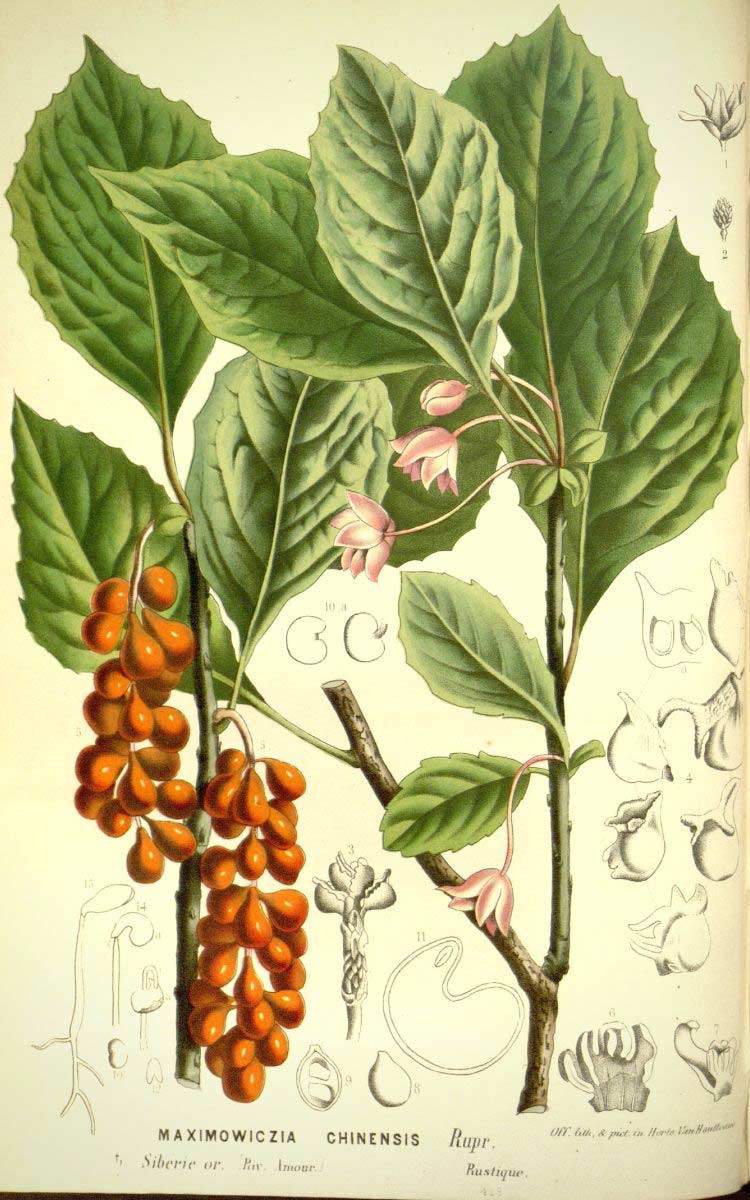
Schisandra chinensis: Botanical illustration
The leaves of Schisandra are simple, entire, generally oval in shape, with the edge of the lamina sometimes dentate. They are quite ordinary. They measure between 5 and 15 cm in length. They are arranged alternately on the stems, one after the other.
The leaves of cultivated species are deciduous, falling in autumn with the cold, and unfolding again in spring when temperatures become milder.
Flowering occurs in spring or early summer, between May and July, depending on the varieties. The flowers can be a beautiful red, as in Schisandra rubriflora, white, or even yellow (S. henryi). The Schisandra grandiflora is remarkable for its elegant, highly fragrant white flowers. Those of the species Schisandra chinensis are also white, but are more discreet and smaller than those of other species, with petals that are also thinner.
The flowers are supported by a long peduncle and are drooping, directed towards the ground. They can be solitary or gathered in clusters. They are axillary, inserted at the axil of the leaves. The flower buds are very rounded, gently opening to reveal the stamens or pistil. The petals have a bulging, concave shape. The flowers are very soft and delicate. They have a cup shape. They measure up to 2-3 cm in diameter. The flowers bear between 5 and 12 tepals (undifferentiated sepals or petals). They are arranged in two rows.
The flowers, particularly those of Schisandra grandiflora, are pleasantly fragrant.
The flowers are unisexual: they are either male or female. Male flowers bear stamens and release pollen that fertilises female flowers by depositing on the pistil, which then allows for the development of fruits.
Schisandra is a dioecious plant: there are male and female plants. Thus, only female plants produce fruits. To obtain them, we recommend planting both male and female plants to allow for pollination.

The flowering of Schisandra chinensis, Schisandra grandiflora, and Schisandra rubriflora
In late summer or early autumn, Schisandra produces fleshy, round berries, bright red in colour. They generally measure five or six millimetres in diameter. They are gathered in clusters and are very decorative! The clusters measure between 3 and 20 cm in length. Each fruit contains between one and three seeds.
The fruits are harvested in early autumn, around September-October. It is primarily the berries of the species Schisandra chinensis that are used. They can be consumed fresh, but are usually dried. They are called “five-flavour berries” because they have a sweet, bitter, salty, sour, and spicy flavour. They can be made into juices, infusions, tinctures… They can also be added to salads. In commerce, they are also found in capsule form. They are used in Chinese medicine and are called Wu Wei Zi.
The berries of Schisandra have numerous medicinal properties. They are adaptogenic, stimulating, help to revitalise the body, improve stress resistance, and combat fatigue. They enhance endurance, as well as physical and mental performance. They are said to have positive effects on memory and concentration. They are also aphrodisiac and can increase libido. They have a protective effect on the liver. Nutritionally, Schisandra berries are rich in vitamins, trace elements, and amino acids. They also contain phytoestrogens. They should not be consumed by pregnant women.

The flowers and fruits of Schisandra chinensis (photos VoDeTan2 / Vladimir Kosolapov)
“`
The main varieties of Schisandra
The Most Popular Varieties
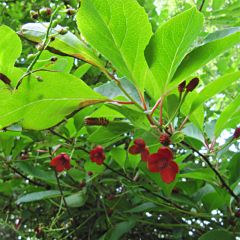
Schisandra chinensis
- Flowering time June, July
- Height at maturity 8 m
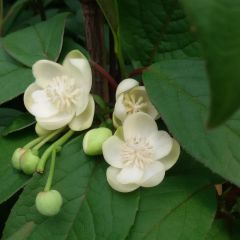
Schisandra grandiflora
- Flowering time June, July
- Height at maturity 6 m
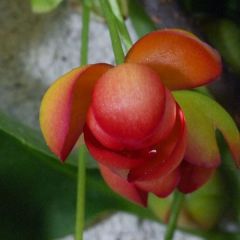
Schisandra rubriflora
- Flowering time June, July
- Height at maturity 3 m
Discover other Schisandra
View all →Available in 1 sizes
Available in 1 sizes
Available in 1 sizes
Available in 1 sizes
Planting Schisandra
Where to plant?
As Schisandra naturally grows in understorey, it is best to position it in partial shade. It prefers to have at least its base in the shade, and if possible, the rest of the foliage in sunlight. You can also plant it so that it benefits from morning sun while being shaded during the hottest hours of the afternoon. Avoid intense sunlight at all costs. Feel free to place it at the edge of the understorey, allowing it to climb up trees easily. Another good option is to grow it against a wall in a sheltered, shaded spot.
Since it enjoys cool soils, Schisandra will thrive near a pond or watercourse. Schisandra prefers cool, humus-rich, fertile, deep soils. It does not like dry, poor soils. Schisandra tolerates heavy, clayey soils and prefers forest-type soils, such as those found in understorey. It also has a preference for slightly acidic soils.
Schisandra is quite hardy and does not need winter protection. It can be cultivated even in relatively cold climates, such as mountainous regions.
You can train Schisandra to climb on a trellis, in a tree, on a pergola, an arch, or a gazebo. It is also possible to train Schisandra horizontally on wires. It can also climb on a trellis against a wall. Provide it with a sufficiently large support. Remember that it can reach up to 10 m in height.
→ Discover how to plant your Schisandra in pots and how to prune and train Schisandra in Pascale’s advice sheets.
When to plant?
Plant Schisandra preferably in spring, around May, or alternatively in autumn (September-October). We recommend planting during mild, slightly overcast weather, avoiding periods of frost or extreme heat.
How to plant?
To enjoy the fruits of Schisandra, we advise planting at least one male plant and one female plant, as this will allow for pollination.
- Place the root ball in a basin filled with water to allow it to rehydrate.
- Dig a planting hole two to three times the size of the root ball.
- Replace a bit of soil mixed with well-decomposed compost at the bottom.
- Place the Schisandra in the planting hole.
- Replace the soil around the root ball.
- You can install a stake or trellis and direct its stems there.
- Water generously.
In the weeks following planting, continue to water regularly.
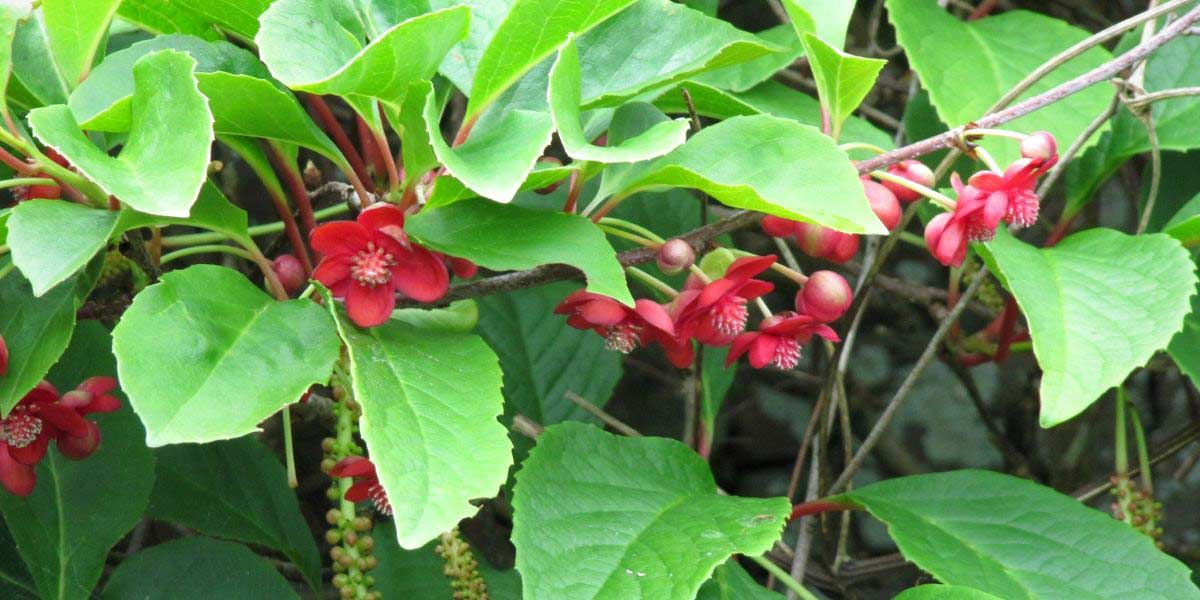
Schisandra rubriflora (photo Leonora Enking)
Maintenance, berry harvest
Water regularly, at least during the year of planting, as Schisandra is sensitive to drought. It is important that the soil remains cool, even moist. We also recommend adding a layer of organic mulch around its base.
Feel free to add well-decomposed compost to enrich the soil. Indeed, Schisandra thrives in fertile soils rich in organic matter. Additionally, this will improve the soil structure, increasing its water retention capacity.
Aside from these precautions, Schisandra requires very little maintenance. It is not very susceptible to diseases and pests, but it can still be affected by powdery mildew.
The harvest of Schisandra berries takes place around September-October. You can consume them fresh or dry them for preservation, and then use them in infusions. You can also collect the berries to extract the seeds and attempt sowing, but it can be a bit tricky to succeed.
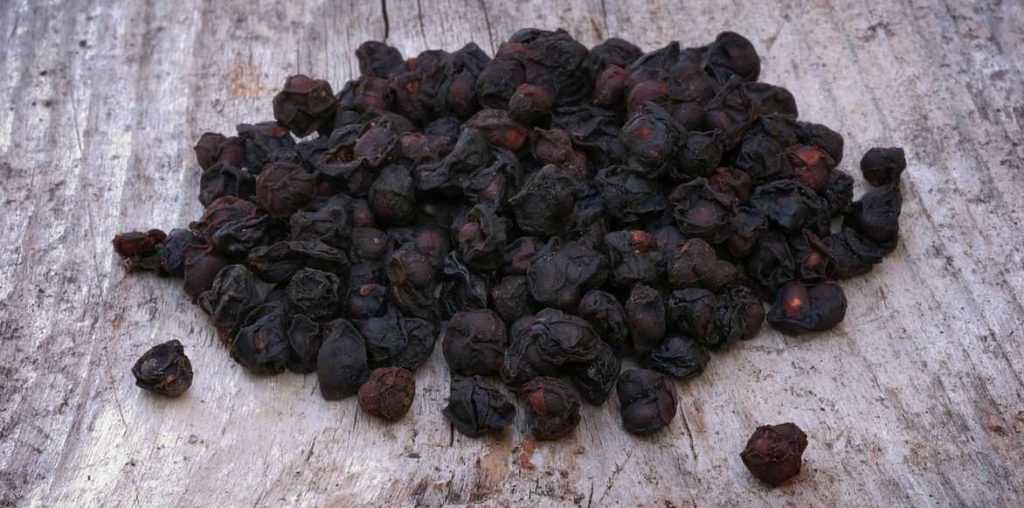
Schisandra berries
Multiplication
It is possible to propagate Schisandra by sowing or by propagation by cuttings. In any case, this liana is not very easy to propagate, and the germination or rooting rate is quite low. Additionally, plants obtained from sowing will require several years before producing berries. For Schisandra cuttings, you can take either herbaceous cuttings in spring, around May-June, or semi-woody cuttings in late summer.
Sowing
You can sow Schisandra in spring, or in autumn using freshly harvested seeds.
The seeds are a bit tricky to germinate. They require cold stratification, which you can achieve by placing them in the refrigerator before sowing. As the germination rate is quite low, we recommend sowing a larger number of seeds than you would for other plants.
- Prepare a pot with potting soil.
- Sow the Schisandra seeds.
- Cover them with a light layer of substrate, then gently firm down.
- Water with a fine spray.
- Place the pot under a cold frame, in a bright location but out of direct sunlight.
- Continue to water regularly, ensuring the substrate remains moist but not overly wet.
Association
As Schisandra thrives in shaded areas and rich, cool soil, it will find its perfect place in a woodland garden. You can recreate a beautiful natural scene by planting alongside it decorative foliage plants, such as ferns, Paris polyphylla, Brunnera macrophylla… Also enjoy the dense, covering foliage of Pachysandra! For their delicate flowers, choose Geranium nodosum, corydalis, astrantias, Solomon’s seal, and lady’s mantle… You can integrate grasses such as luzula, carex, Hakonechloa macra… Also discover the stunning Cornus canadensis, a groundcover dogwood that offers beautiful large white flowers made up of four bracts, as well as decorative foliage that turns red in autumn.
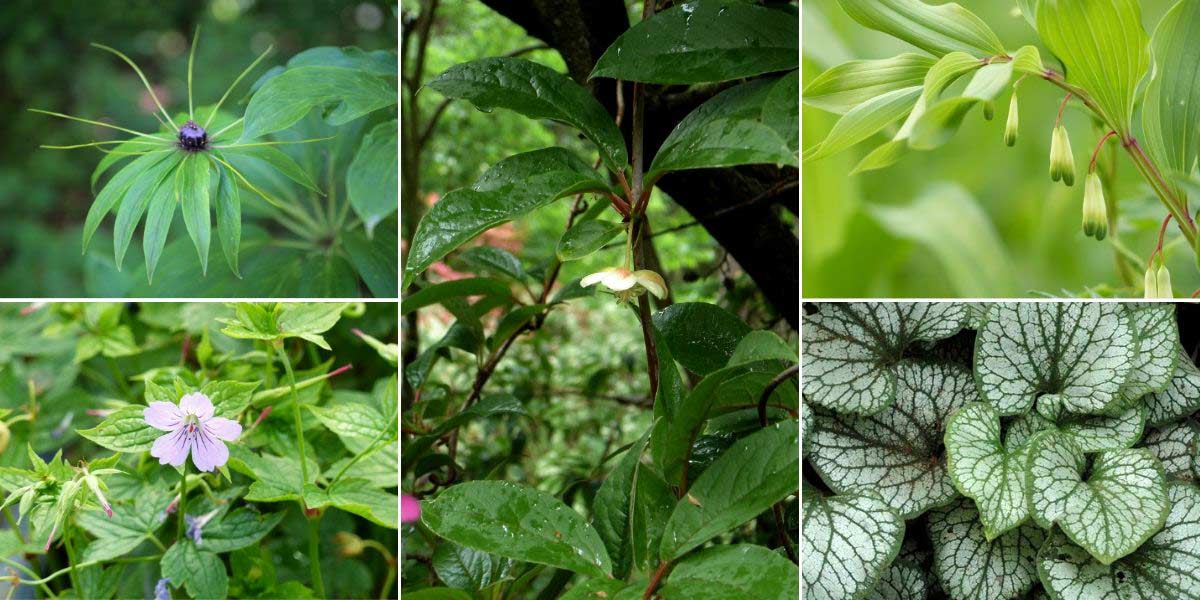
Schisandra is a liana that fits perfectly into woodland gardens! You can associate it with other plants that enjoy cool, shaded conditions. Here, in order, are Paris polyphylla, Geranium nodosum, Schisandra grandiflora (photo Peganum), Polygonatum odoratum, and Brunnera ‘Jack Frost’
You can also associate Schisandra with other climbing plants. For example, discover Akebia quinata, which offers beautiful, finely cut, light green foliage and an original spring flowering. Additionally, its berries are edible! You can also plant clematis, which, like Schisandra, prefer to have their roots in the shade while the rest of the foliage enjoys the sun. Also discover Kadsura japonica, another Asian climber, similar in style to Schisandra.
You can associate Schisandra with trees and bushes that it can climb. Plant it at the base of a fruit tree and let it climb into its canopy. Also take advantage of shrubs with edible fruits! You can associate it with persimmon, pawpaw, raspberries, blackberries, blue honeysuckle, and Lycium barbarum (which produces Goji berries!)… Pair it with plants that also produce unique, medicinal, and highly nutritious berries.
Feel free to install perennials at its base. This will also help shade the base of Schisandra and keep the soil cool – everything it needs! Enjoy, for example, hardy geraniums, heucheras, or hostas…
Useful resources
- Discover our range of Schisandra
- Schisandra on the Plants and Botany site, with plenty of botanical information on the different species
Frequently asked questions
-
My schisandra isn't producing fruit, or it's producing very little. Why is that?
First of all, Schisandra is a dioecious plant: only female plants can produce fruit. To do so, they need to be pollinated by male plants. Therefore, to obtain fruit, we recommend planting several specimens of both sexes.
Next, the conditions may not be optimal for Schisandra: it requires rich, humus-bearing, cool soil, and the berries develop better when they receive good light and some sunshine. If your soil is poor and dry, or if the shade is too dense, Schisandra will struggle to bear fruit. Don't hesitate to add organic matter and mulch around the base.
Finally, your plant may be too young. When grown from sowing, they need at least three to four years before they start producing fruit. Be patient.
- Subscribe!
- Contents
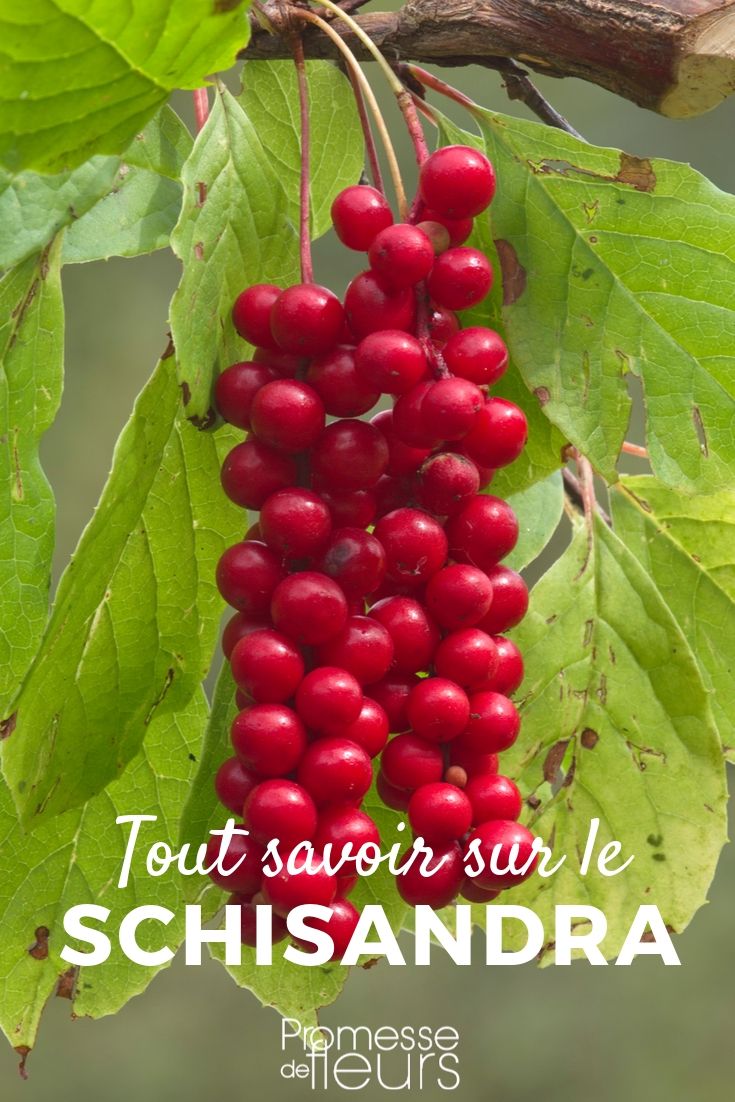
































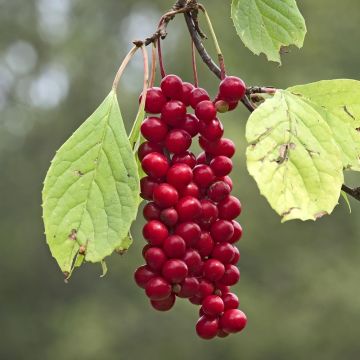


Comments